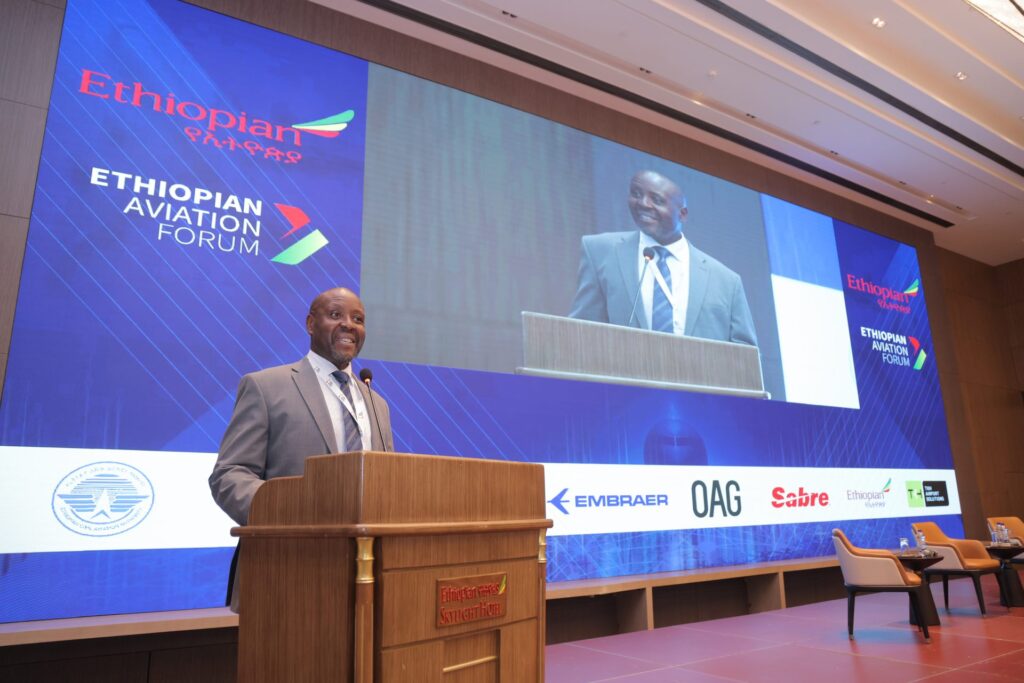In a bold and structured presentation at the Ethiopian Airlines Forum 2025, Kenya Airlines (KQ) CEO Alan Kirabuka laid out the airline's multiphase turnaround strategy.
Continental Challenge
Kirabuka's remarks were opened with a harsh comparison between African aviation environments and other regional environments. African airlines operate under heavy restrictions. Due to refining capacity and weak import dependence, fuel costs can be up to 40% higher. With a lack of infrastructure, only 34% of airports in sub-Saharan Africa boast paved runways. Fragmented regulatory regimes and excessive taxes reduce costs and reduce competitiveness.
In contrast, regions such as Europe and East Asia benefit from streamlined tax structures, harmonious airspace management, developing airport infrastructure, and reducing borrowing costs. The average effective interest rate for African Airlines is located at 8.2% compared to just 1-2% in developed countries.


Kifal Strategy: Three-phase Turnaround
Kenya Airlines, once wobbling under debt and operational inefficiency, has launched a comprehensive recovery plan under the “Kifal” banner. The surprising shift in airlines culminated in 2024 with its first annual profit in over a decade, marking a significant milestone in the airline's recovery journey. Chairman Michael Joseph attributed the success to Project Kifal, the airline's strategic recovery plan. This financial rebound not only marks a return to profitability, but also positions Kenya Airlines for sustainable growth in the competitive aviation industry.
Kifal 1.0: Basic Survival (2020–2021)


Triggered by the onset of Covid-19, this phase focused on basic cost optimization, fleet resizing and labor efficiency. KQ has adapted quickly to maintain survival rates during the crisis.
Kifaru 2.0: Stabilization and Recovery (2022–2023)
While the recovery was underway, airlines introduced deeper operational restructuring and cultural transformation programs aimed at productivity and customer excellence. Cost rationalization coincided with the strategic revenue acceleration initiative.
Growth stage (2024 and later)
As of late 2024, Kenya Airlines is looking to grow in a calculated and sustainable way. This includes expanding fleet and networks, pursuit of strategic equity investments (SEI), and greater participation in regional aviation initiatives.
Strategic alignment with pan-African ambitions
Kilavuka highlighted the collaboration with the airline's broader integration goals in Africa through three key frameworks.
AFCFTA (Africa Continental Free Trade Area): KQ sees growth as a catalyst for growing demand for intra-Africa trade, regional supply chains, and air freight.
SAATM (Single African Air Transport Market): defends liberalized air, increased direct routes, and reduced fares due to competition.
PAAG (Pan Africa Airlines Group): Foresightful initiatives for shared infrastructure, economies of scale and route adjustments. KQ benefits from synergistic maintenance, repairs, overhauls (MRO), pilot training and integrated market access.

Kenya Airlines' “turnarounds depend not only on internal reforms, but also on reshaping the local aerial ecosystem. “Our competitiveness in long-distance routes and overall financial sustainability will be greatly enhanced through strategic collaboration,” Kilavuka said.




